PDF chapter test TRY NOW
Respiration is the oxidation process in cellular metabolism, which involves the degradation of food substances to generate energy.
Based on the process of oxidation of nutrients, respiration is of \(two\) types:
1. Aerobic respiration - Type of respiration where cells use oxygen for the oxidation of food substances. The site of respiration occurs in the mitochondria of the cells. As a result, greater number of ATP is produced per glucose molecule.
2. Anaerobic respiration - Type of respiration where the oxidation of food substances occurs in the absence of oxygen. It is also known as fermentation. The site of respiration is the cell's cytoplasm. As a result, lesser number of ATP is produced per glucose molecule. Anaerobic respiration occurs during the deficiency of \(O_2\).
Respiration involves
1. Break down of glucose (\(six\)-carbon molecule) to pyruvate (\(three\)-carbon molecule) happens in the cytoplasm. The process is called glycolysis.
2. Breakdown of pyruvate occurs in the mitochondria. The breakdown products of pyruvate differ and depends on the type of respiration and the organism. In yeast and other microbes, pyruvate is converted to ethanol and carbon dioxide by fermentation.
In the absence of oxygen in muscles, pyruvate is converted to lactic acid and energy. While in aerobic respiration, pyruvate is converted to carbon dioxide and water.
3. Respiration involves two processes - breathing and cellular respiration. Breathing is the gaseous exchange where there is an intake of \(O_2\) from the atmosphere called inspiration and release of \(CO_2\) called expiration.
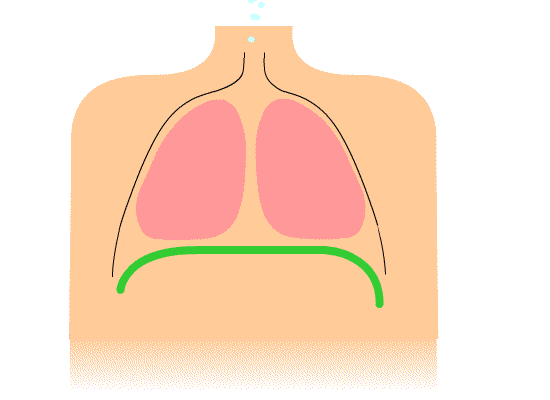
Breathing illustration
Cellular respiration is the breakdown of food substances to release energy.
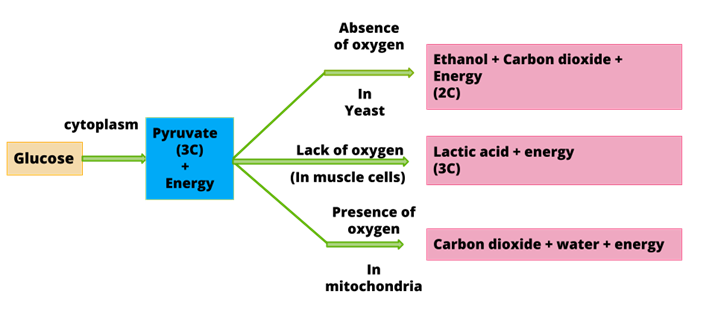
Breakdown of glucose through different processes
What is ATP?
Most of the cellular processes use ATP as their energy currency. The energy released in the process of respiration is utilised to synthesize an ATP molecule from ADP and inorganic phosphate.
ADP \(+\) Inorganic phosphate ATP
The endothermic reactions or processes in the cell employ the ATP as a fuel to drive the reactions. When the terminal phosphate linkage is broken by water, \(30.5\) \(KJ/mol of energy\) is released.
Consider how a battery provides energy for a variety of applications. The battery can be utilised to generate electrical energy, mechanical energy, light energy etc.
Similarly, ATP can be used for various different process like muscular contraction, protein synthesis, nerve impulse transmission etc.
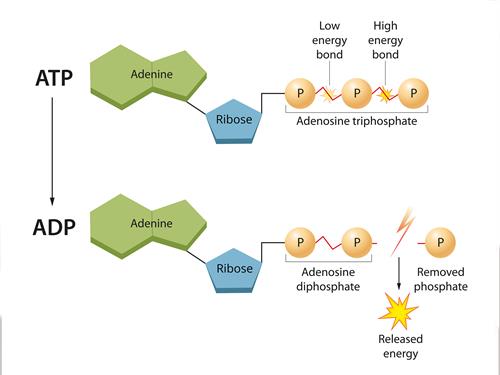
Release of energy when ATP is converted to ADP
Exchange of gases
For aerobic respiration, organisms need a constant supply of \(O_2\) and \(CO_2\) produced during the process, which needs to be removed from the body. Different organisms use different modes of inflow of \(O_2\) (inspiration) and outflow (expiration) of \(CO_2\).
In unicellular organisms, in plants and in simple organisms, exchanges of gases take place through diffusion.
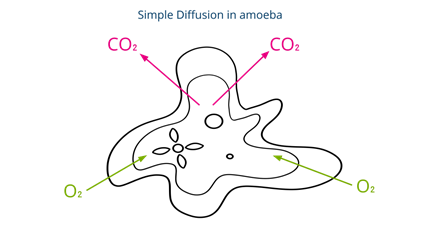
Unicellular diffusion in Amoeba
In multicellular and complex organisms, the respiratory system aids in the exchange of gases.
Example:
In fishes, the gills serve as a respiratory organ that uses \(O_2\) dissolved in water. Have you noticed that the opening and closing of mouth and gill slits are coordinated?
When the fish engulfs water, the gill slits are closed. The engulfed water is sent to the gills immediately. The gills absorb dissolved oxygen (\(O_2\)) present in the water into the blood. When the fish's mouth closes, the water is released through the gill-slits.
The number of times the fish opens and closes its mouth is more than that observed in humans. This is because the dissolved oxygen in water is low, and thus the breathing rate (opening of mouth in case of fishes) is faster than that of terrestrial organisms.
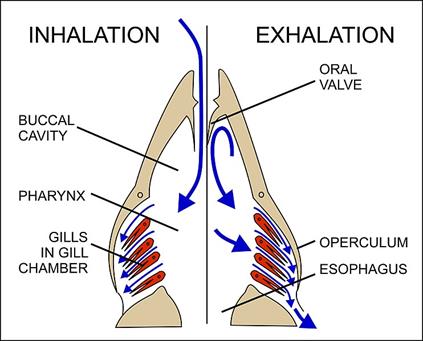
Inhalation and exhalation in fish
In earthworms, the skin is used for the gaseous exchange.
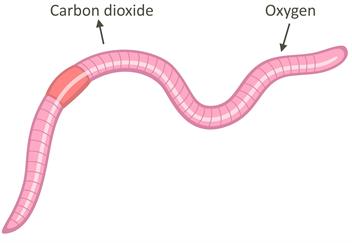
Exchange of carbon dioxide and oxygen through the skin in earthworm
Insects have spiracles and trachea for taking in \(O_2\).
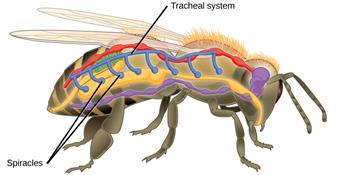
Spiracles and trachea in insects
Terrestrial organisms like a lion, dogs, cats, and human have lungs for the gaseous exchange.
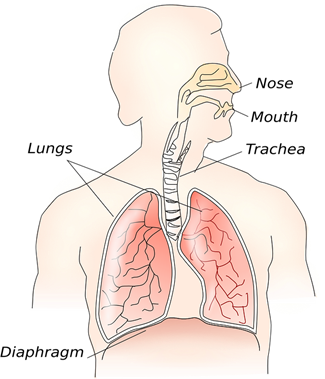
Lungs in human beings
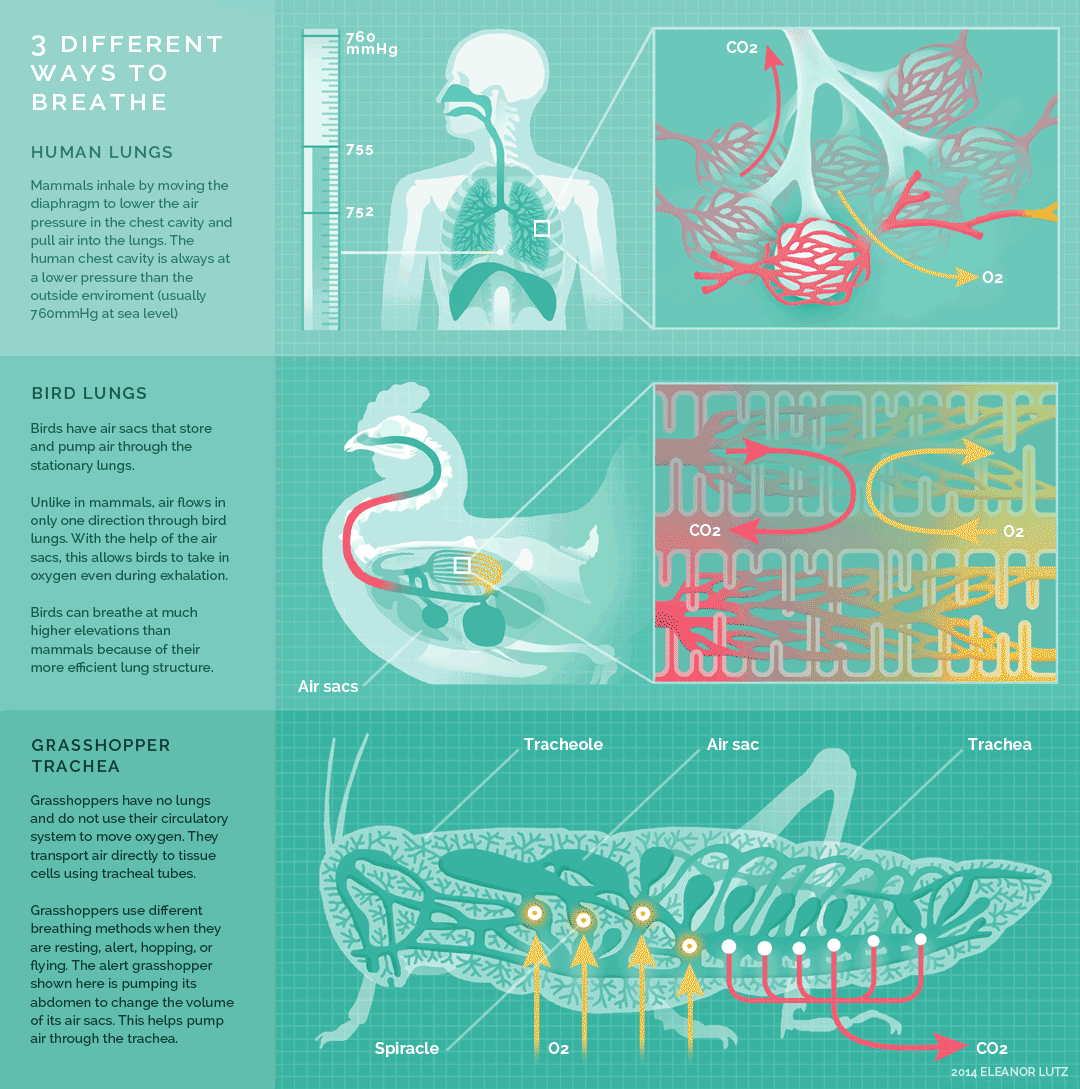
Exchange of gases in different organisms
Reference:
https://commons.wikimedia.org/w/index.phpsearch=breathing&title=Special:MediaSearch&go=Go&type=image
https://commons.wikimedia.org/wiki/File:Breathing_in_fish.jpg
https://upload.wikimedia.org/wikipedia/commons/c/ce/Figure_39_01_05.jpg
https://pixabay.com/vectors/anatomy-body-lungs-biology-science-117148/
https://med.libretexts.org/Bookshelves/Veterinary_Medicine/Book%3A_Introductory_Animal_Physiology_%28Hinic-Frlog%29/2%3A_Gaseous_Exchange/2.3%3A_Gaseous_Exchange_Mechanism
https://www.shutterstock.com/image-illustration/atp-energy-currency-cell-1509423494
